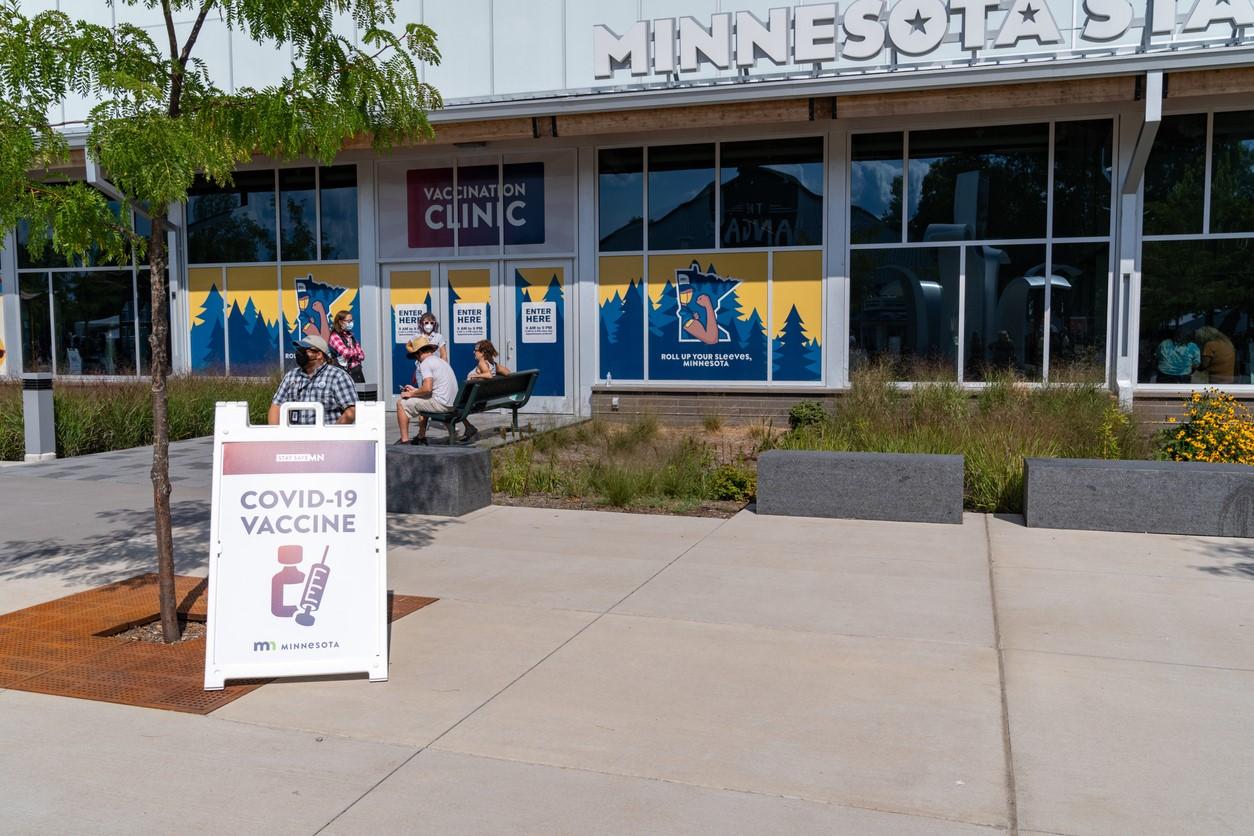A study of more than 850,000 people in Minnesota and Wisconsin finds a link between a preference to speak a non-English language and limited English proficiency and delayed time to first COVID-19 vaccination and increased rates of SARS-CoV-2–related hospitalization and death among some language-preference groups.
For the study, published yesterday in JAMA Network Open, a University of Minnesota–led research team studied COVID-19 vaccine uptake and disease outcomes among 851,410 adult patients of a large health system in Minnesota and western Wisconsin from December 2020 to March 2022. The COVID-19 primary-series rollout took place from January to May 2021 amid Alpha and Delta variant predominance, and October 2021 to March 2022 coincided with the booster vaccine rollout and Omicron.
The median patient age was 29 years, 58.0% were women, 7.5% were born outside of the United States, 4.0% had a preference for a language other than English (LPOE), and 3.0% showed limited English proficiency (LEP) demonstrated by their need for an interpreter. The most common preferred non-English languages were Spanish (27.0%), Somali (19.3%), and Vietnamese (10.3%).
The researchers noted that, according to the 2019 American Community Survey, of 65 million US residents who speak a non-English language at home, 39% report LEP.
4 times more deaths among Native Americans
Delayed first-dose COVID-19 vaccine receipt was tied to LPOE (hazard ratio [HR], 0.83) and interpreter need (HR, 0.81)—or a 17% to 19% lower rate—relative to those who preferred and were proficient in English. By the end of the study, 19.3% of participants hadn't received their first vaccine dose. Of mRNA vaccine recipients, 94% completed the primary series by 42 days.
Of the 65 million US residents who speak a non-English language at home, 39% report low English proficiency.
LPOE patients were roughly twice as likely to be hospitalized (rate ratio [RR], 1.85) or die (RR, 2.13) from COVID-19. Patients with LEP had even higher rates of COVID-related hospitalization (RR, 1.98) and death (RR, 2.32).
A comparative analysis that used White patients as the reference group showed delayed vaccine receipt among Black (HR 0.71), Hispanic (HR, 0.88), Native American (HR, 0.92), Native Hawaiian/Pacific Islander (HR, 0.94), other race (HR, 0.90), and multiracial (HR, 0.97) participants.
Asian cohort participants, however, were quicker to get vaccinated (HR, 1.22). Vaccination was lowest for Black patients (RR, 0.82) and highest for Asian patients (RR, 1.16). Hospitalization rates were higher in most racial groups than among White participants: 2.6 times higher for Black (RR, 2.65), 2.1 times higher for Hispanic (RR, 2.08), 2.2 times higher among Native American (RR, 2.19), and 2 times higher for Native Hawaiian/Pacific Islander (RR, 1.99) participants.
Similarly, COVID-related death rates were twice as high among Asian patients (RR, 1.98), Black (RR, 1.8), and Hispanic (RR, 1.82) patients, nearly three times higher for multiracial patients (RR, 2.76), and four times higher for Native Americans (RR, 4.01).
Need for improved health equity
Variation in delayed vaccination by language was observed for groups that would typically have been aggregated under racial and ethnic categories.
For instance, Hmong (Asian category) had delayed vaccine receipt (HR, 0.89) but had caught up by the end of the study period (RR, 1.00). The delay, however, was tied to a higher rate of hospitalization (RR, 3.05) and death (RR, 5.48). On the other hand, more rapid vaccine uptake in some language groups wasn't associated with lower hospitalization and death rates.
Pronounced delays in vaccine receipt, lower vaccination rate, and increased COVID-hospitalization and rates were also noted among Eastern European language speakers, Somali patients, and Spanish speakers.
The authors said that unmet language needs are an important barrier to high-quality healthcare and health equity across racial groups. These groups, they added, are less likely to have a clinical home or to have received preventive care in the previous year.
"The findings suggest that data collection of language preference and interpreter need provides actionable health intervention information," they wrote. "Standardized system-level data collection, including at a national level, may improve efficient identification of social groups with disproportionate health disparities and provide key information on improving health equity in the US."




















